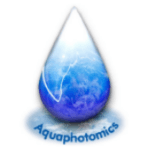Aquaphotomics: A new science for understanding the role of water
Aquaphotomics is a new “omics” discipline introduced by Professor Roumiana Tsenkova at the Laboratory of Bio Measurement Technology at Faculty of Agriculture, Kobe University, Japan. The main object of this new field is to understand the role of the water molecular system in biological and aqueous systems by monitoring the water electromagnetic (EM) spectrum of those systems under various perturbations.
Aquaphotomics presents the water EM spectral pattern as multidimensional holistic marker related directly to the respective system functionality. Aquaphotomics is based on the discovery that water in biological and aqueous systems works as a ‘mirror’ of matter and energy and therefore its spectral pattern can be used to characterize the system as a whole. This is also called the WAter Mirror Approach (WAMA).

Aquaphotomics: From a segmented to a global approach
Water is an invaluable resource for human health, food security, sustainable development and the environment. Understanding the role of water in aqueous and biological systems is of crucial importance. Historically, water properties have been extensively studied. Different methods have been applied to study the chemistry of water itself, from X-ray spectrometry to THz spectrometry. However, even if these techniques provide us with valuable information on water molecules, they generally focus on water as an isolated/separate chemical and physical subject only, in contrast to focusing on water as an interdependent connected functional system interrelated to its environment.
Likewise, from biology science point of view, up to very recently, biologists have been focusing on pinpointing single biomolecules related to natural phenomena, without considering the contribution of all components of the system, and especially without considering water.
However, the function of single biomolecules is highly related to their molecular structure, which in turn is influenced by all components of the system, therefore biomolecules are not to be seen as separate from surrounding components. Moreover, their molecular structure is highly related to the creation of hydrogen bonds with the surrounding water molecules.
Therefore, in aquaphotomics, the water molecular structure of a bio aqueous system is considered as a global ‘mirror’ reflecting the functionality of the respective system.
Since water has been studied by different disciplines in many different ways and all of them use their own particular terminology it is quite difficult to translate scientific findings from one area in to another. Aquaphotomics provides an opportunity to start building up a “water vocabulary” where the “letters” are the water bands and the water spectral patterns are the “words” identifying different phenomena in order to translate findings about water between different disciplines.
Aquaphotomics: A new “omics” discipline
From a reductionist to a holistic approach
Genomics, proteomics, metabolomics and more “omics” have revolutionized life science. However, they study isolated elements, therefore reducing the system to its parts.
The more holistic view is partly being addressed by systems biology and functional “omics” disciplines. They integrate proteomics, transcriptomics and metabolomics information to provide a better understanding of cellular biology.
Aquaphotomics is introduced as a true holistic approach encompassing all other “omics” disciplines. Aquaphotomics observes the whole system, without reducing the system to its parts. Using previously acquired “big spectral data” under various perturbations and by analyzing only one water spectrum, aquaphotomics provides insight in functionality, as well as components of a system investigated in all other “omics” disciplines.

From a static and destructive to a dynamic and non-destructive, non-invasive approach
Furthermore, in e.g. genomics and proteomics, creating databases and further using them for understanding biological processes, requires isolation of individual elements (genes, proteins) one at a time, making such analyses extremely time consuming and laborious. Moreover it requires destruction of the analyzed object and thus provides only a single time-point (static) picture of the processes. Considering the speed, plasticity and multifactor-dependence of biological processes it is clear that such static one-at-a-time approach needs to be replaced with more dynamic and real-time methods.
The aspect of dynamics has been partly addressed by metabolomic profiling, where a snapshot of the physiology of the cell at a specific moment can be acquired. Even though metabolomics and aquaphotomics are taking completely different approaches, they try to solve the same problem – to provide systematic, at a glance view of the processes with time-dependent information of their interconnections. In contrast to metabolomics, aquaphotomics doesn’t destruct the sample with the measurement, therefore it can study the same object fast, non-destructively, non-invasively and continuously, thereby it is able to monitor ongoing processes dynamically.
Through an understanding of water–light interaction dynamics and its relation to biological functions, aquaphotomics brings together the knowledge acquired by other “omics” disciplines describing single elements of biological systems and upgrades it to a system holistic level as water does in biological and aqueous systems.
Aquaphotomics and the conventional spectroscopy approach
Aquaphotomics is fundamentally different from the conventional spectroscopy approach.
- In most of NIR-IR spectroscopy studies, the water absorption band is considered as masking the real information, e.g. glucose is measured outside the water absorption band or water is evaporated in order to “see” better the absorbance of the molecule of interest. In contrast, in aquaphotomics, the water spectral pattern is considered as the main source of information. Water is the matrix, the “envelope”, the “scaffold” of the system.
- In aquaphotomics “functionality” of the system is the key, instead of presence of individual molecules.
- In most conventional spectroscopy studies, models are made for each separate component to be able to diagnose a system, combining the models multiplies the errors thereby producing inaccurate results. In aquaphotomics, instead of looking for the individual components, the water spectral pattern is used as a holistic marker, and monitoring this marker can provide information about changes in the system with more than three sigma differences.
Aquaphotomics is well developed in the visible (VIS) and near-infrared (NIR) range of the spectrum. NIR range is the perfect window for non-invasive measurements of live biological and aqueous systems, as NIR light penetrates deep into the water, and does not get fully absorbed, making it possible to measure the spectrum of the light that comes back out of the water after interacting with all the matter and energy in the solution.
Currently, in conventional NIR spectrometry field, more scientists/chemists are including water spectral data as a source of information. Studying aquaphotomics will help scientists understand the functionality of water in biological and aqueous systems.
Aquaphotomics vocabulary
Water absorbance band (WAB): A water absorbance band is a spectral band where the variation of the optical density (OD) is highest in response to steps of a certain perturbation. Water bands are hubs of information for the water molecular structure and functionality of a system. In aquaphotomics the water bands are called letters.
WAter MAtrix CoordinateS (WAMACS): WAter MAtrix CoordinateS have been introduced to capture and present the information about the influence of different perturbations on the water spectrum in VIS-NIR range (and rest of EM spectrum) for biological and aqueous systems. The WAMACS are spectral ranges where water bands are found with the highest probability. WAMACS are hubs of information and have been assigned to water molecular structures. For the water first overtone, 12 WAMACS have been experimentally discovered and these have been confirmed by overtone calculations of already reported water bands in IR range. The exact location of a WAB within WAMACS differs per bio-aqueous system and perturbation. .
WAter Spectral Pattern (WASP): For every perturbation and bio-aqueous system specific water bands (letters) are found. The normalized optical densities (OD) at those respective water bands create specific water spectral pattern (WASP) per perturbation of interest (word). WASP can be used as holistic marker directly related to the functionality of the system.
Aquagram: An aquagram is the visualization of the water spectral pattern (WASP) in a star chart, where the axes are the water bands that are found for the respective perturbation. For the first overtone of water, the axes of the aquagram are based on previously discovered 12 WAMACS. The exact location of each WAB is based on the specific spectral dataset (system and perturbation). These axes can be used to compare different systems or conditions of the same system. For detailed analysis of a system, new WABs could be discovered and used as axes.
Aquaphotome: Aquaphotome is the comprehensive database of 1) all existing water bands with their assignments related to water molecular structure and 2) water spectral patterns with the interpretation of their functionality per system and perturbation. Aquaphotome development could be considered as writing the alphabet of water-light interactions, where WABs are the letters and WASPs are the words. The entire aquaphotome is composed of aquaphotomes per system and perturbation.
Water Mirror Approach (WAMA): Aquaphotomics discovers and uses the property of water being a matter and energy mirror. It is assumed that all components in a complex system are “reflected” by the water molecular system. The water molecular structure/system, described by water spectral patterns gives information about the rest of the components in the system.
